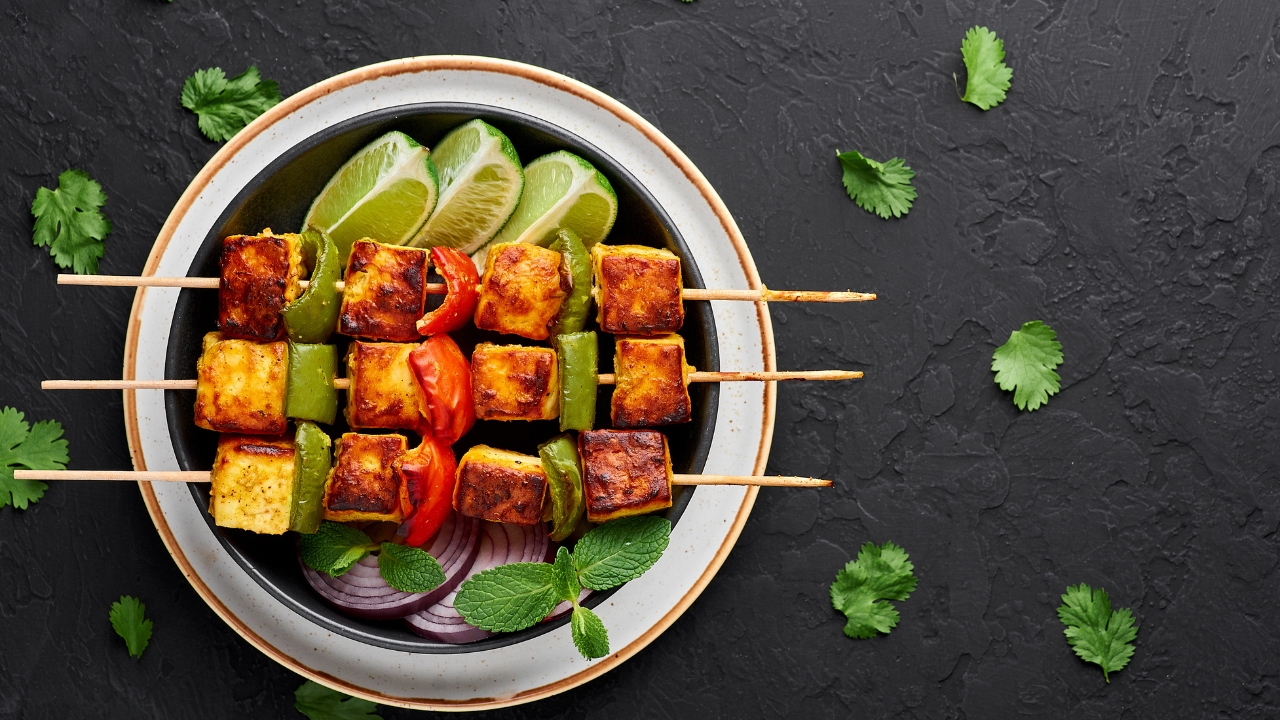5 Mouthwatering Savoury Flavours

5 Mouthwatering Savoury Flavours That Will Leave You Wanting Seconds
When it comes to culinary delights, sweet treats often steal the spotlight, but the world of savoury flavours is just as captivating and satisfying. Savoury, or umami, is a complex taste sensation that adds depth and richness to a wide array of dishes. In this gastronomic journey, we'll delve into the realm of savoury flavours, exploring their characteristics, health benefits, and the top 5 savoury flavours that will tantalize your taste buds. Get ready to embark on a savoury adventure that will have you craving seconds.
Understanding Savoury Flavors
Savoury flavors, often referred to as umami, represent a unique and essential dimension of taste that complements sweet, sour, bitter, and salty sensations. Unlike these other tastes, which are more easily identifiable, savoury flavor is characterized by its complexity and depth.
At its core, savoury flavor is reminiscent of the rich and satisfying tastes found in protein-rich foods like meats, broths, and aged cheeses. It is often described as savory, meaty, or earthy. The umami taste is attributed to the presence of glutamate, an amino acid naturally occurring in certain foods.
Savoury flavors are characterized by several key qualities:
- Depth: Unlike more straightforward tastes like sweetness or saltiness, savoury flavors possess layers of complexity. They can be both bold and subtle, offering a wide range of taste experiences.
- Umami: Umami is the Japanese term for this unique taste sensation, which can be described as meaty, brothy, or slightly salty. It is the essence of savouriness.
- Balancing Act: Savoury flavors are known for their ability to balance and enhance other tastes, contributing to the overall harmony of a dish.
Savoury flavors play a vital role in the culinary world, forming the basis for many beloved dishes and seasonings. They add depth, complexity, and satisfaction to a wide range of foods, making them an essential component of diverse cuisines around the globe. Understanding and appreciating savoury flavors can greatly enhance your culinary adventures and your ability to create memorable and delicious meals.
Health Benefits of Savory Flavors
Embracing savoury flavors in your diet can offer several surprising health advantages. While many people tend to associate savory dishes with indulgence, there are hidden benefits that make them a valuable addition to a balanced eating plan.
- Nutrient Density: Savoury foods often contain nutrient-rich ingredients like lean meats, vegetables, and legumes. These provide essential vitamins, minerals, and protein, supporting overall health.
- Protein and Satiety: Savoury flavors are frequently found in protein-rich foods. Protein helps build and repair tissues, promotes satiety, and can aid in weight management by reducing hunger.
- Umami and Reduced Sodium: Incorporating umami-rich savoury flavors can allow for the reduction of added salt in recipes. This can help lower sodium intake, benefiting heart health and blood pressure.
- Balanced Palate: Savoury flavors can balance and enhance the overall taste profile of a meal, making it more satisfying and reducing the craving for overly sweet or salty foods.
- Digestive Health: Certain savory ingredients, such as herbs and spices, can aid in digestion and alleviate gastrointestinal discomfort.
- Flavorful Vegetarian Options: Savoury flavors are instrumental in making plant-based and vegetarian dishes satisfying and flavorful, encouraging the consumption of more vegetables and plant-based protein
Top 5 Savoury Flavours
Exploring the world of savoury flavors is a delightful journey, and these top 5 selections are sure to leave you craving more. Each of these savoury delights offers a unique and tantalizing experience for your taste buds:
Natural Paneer Tikka
Flavour Profile: Paneer tikka is a beloved Indian appetizer known for its bold and aromatic savoury flavors. It features chunks of paneer (Indian cottage cheese) marinated in a blend of yogurt and spices, including cumin, coriander, and garam masala.
Sensory Delight: The natural paneer tikka bursts with smoky and charred notes, complemented by the creaminess of paneer. It's a vegetarian delight that captures the essence of Indian cuisine's savoury complexity.
Chilli Mushroom
Flavour Profile: Chilli mushroom is a spicy and savoury dish that combines earthy mushrooms with a fiery blend of spices, garlic, and soy sauce. The result is a mouthwatering fusion of umami and heat.
Sensory Delight: Chilli mushroom delivers a harmonious contrast between the meaty texture of mushrooms and the vibrant kick of spicy seasonings. It's a savoury sensation with an Asian flair.
Hyderabadi Biryani
Flavour Profile: Hyderabadi biryani is a regal and aromatic rice dish infused with savoury spices, saffron, and marinated meat, often chicken or lamb. The layers of flavors are truly captivating.
Sensory Delight: This biryani's savoury allure lies in its fragrant blend of herbs, spices, and slow-cooked meat. The result is a symphony of savoury and aromatic delights that reflect the rich culinary traditions of India.
Chicken Flavours
Flavour Profile: Chicken is a versatile canvas for savoury flavors. Whether it's a succulent roast, a spicy curry, or a herb-infused grill, chicken offers a wide spectrum of savoury experiences.
Sensory Delight: The appeal of chicken lies in its ability to absorb and showcase various savoury seasonings. From the smoky char of barbecue to the depth of savory herbs, chicken dishes are a delightful exploration of savouriness.
Peri Peri
Flavour Profile: Peri peri, also known as piri piri, is a fiery and savoury sauce hailing from Portuguese-African cuisine. It features a blend of hot peppers, garlic, lemon, and various spices.
Sensory Delight: Peri peri is a savoury adventure in heat and tanginess. It adds a bold and invigorating savoury kick to grilled meats, seafood, or even as a dipping sauce.
Buy Different Flavours from Norex
Cooking Tips and Techniques for Savoury Flavors
Mastering the art of infusing your dishes with savoury goodness requires a combination of techniques and insights. Here are some valuable cooking tips to elevate your culinary creations:
- Balancing Savoury Components: Achieving a harmonious savoury profile involves balancing different elements like saltiness, umami, and aromatics. Experiment with ingredients like soy sauce, miso, or Worcestershire sauce to enhance savoury depth.
- Use of Aromatics: Aromatics like garlic, onions, shallots, and leeks form the foundation of many savoury dishes. Properly sautéed or caramelized aromatics add layers of flavour to your creations.
- Slow Cooking: Low and slow cooking techniques, such as braising or simmering, allow savoury flavors to develop and intensify. This is especially effective for dishes like stews and soups.
- Herb and Spice Blends: Creating your herb and spice blends can enhance savoury dishes significantly. Experiment with combinations like rosemary and thyme for roasted meats or cumin and paprika for a smoky savoury twist.
- Broths and Stocks: Homemade broths and stocks, whether meat-based or vegetable, are a treasure trove of savoury goodness. Use them as a base for soups, risottos, and sauces.
Flavours in Global Cuisines
Savoury flavours transcend borders, and each culture brings its unique twist to umami-rich dishes. Embark on a culinary world tour to explore how savoury flavours are utilized across diverse global cuisines:
- Italian Cuisine: Italian dishes often feature savoury elements like Parmesan cheese, garlic, and basil. Savoury pasta sauces like marinara or Alfredo showcase the richness of this cuisine.
- Chinese Cuisine: Chinese cuisine offers an array of savoury delights, with dishes like Peking duck, Kung Pao chicken, and dim sum showcasing the depth of umami and spices.
- Mexican Cuisine: Mexican cuisine excels in the use of savoury spices like cumin, chili powder, and smoked paprika. Savoury dishes like tacos and enchiladas are beloved worldwide.
- Japanese Cuisine: Japanese cuisine is known for its exquisite balance of savoury and delicate flavours. Dishes like sushi, sashimi, and miso soup highlight the umami-rich ingredients.
- Middle Eastern Cuisine: Middle Eastern cuisine boasts savoury delights like shawarma, falafel, and hummus, often seasoned with aromatic herbs and spices.
Conclusion
Indeed, our exploration of the world of savoury flavours has revealed their remarkable richness and diversity. From enhancing our culinary creations with umami goodness to discovering the unique ways they are celebrated in global cuisines, it's evident that savoury flavours are a culinary treasure trove.
As you continue your culinary journey, remember that Norex, a trusted name in the flavor industry, provides an exquisite array of savoury flavours. Their expertise in crafting high-quality flavour solutions ensures that you have access to the best when it comes to infusing your dishes with savoury goodness. Whether you're seeking the perfect seasoning blend for your signature dish or looking to explore new savoury profiles, Norex is your partner in elevating your culinary creations.
So, embrace the world of savoury delights, experiment with new flavours, and savor the depth and richness they bring to your meals. With Norex by your side, your culinary possibilities are endless, and your taste adventures are bound to be extraordinary.
Frequently Asked Questions
1. Are savoury flavours sweet and sour?
Savoury flavours are distinct from sweet and sour tastes. They encompass a rich, savory, and often hearty sensation, which is different from the sweetness of sugary treats or the tanginess of sour foods.
2. What is the savoury flavour called?
What is the savoury flavour called?
The savoury flavour is often referred to as "umami." Umami is one of the five basic tastes, alongside sweet, sour, bitter, and salty.
3. How many types of savoury are there?
Savoury flavours can vary widely, and there isn't a fixed number of types. Umami, however, is considered a fundamental category of savoury taste.
4. Is garlic a savoury?
Yes, garlic is often associated with savoury flavours. It adds depth and richness to many dishes, contributing to their overall savouriness.












